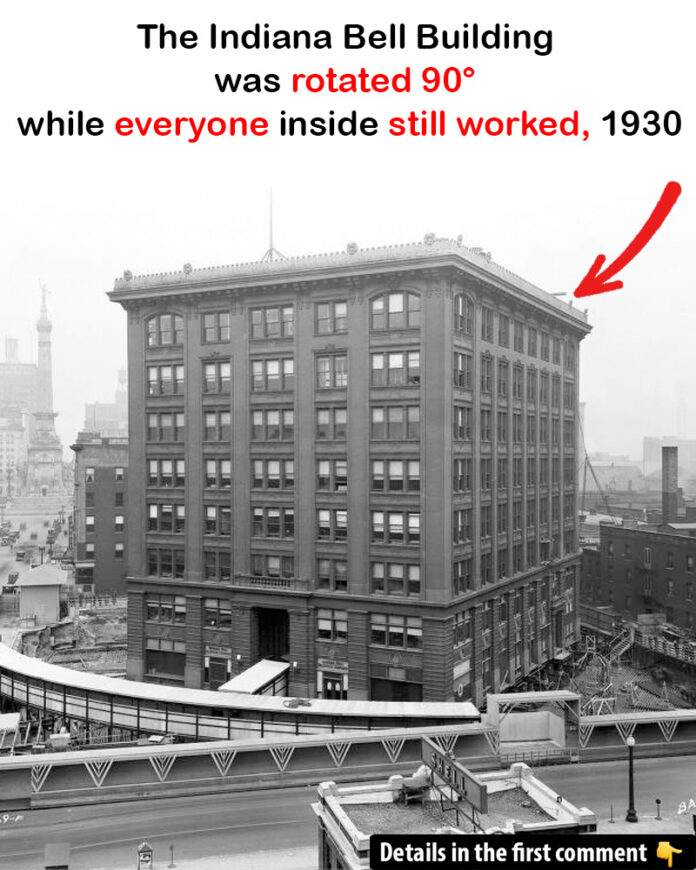In 1930, a quiet yet groundbreaking event unfolded in the heart of Indianapolis. The Indiana Bell Telephone Company performed a feat that defied imagination: rotating their seven-story, 11,000-ton building 90 degrees while its 600 employees continued working inside as though nothing was happening. This story of innovation and perseverance is not only a marvel of engineering but a testament to human ingenuity.
Why Did the Indiana Bell Building Need to Be Rotated?
The origins of this audacious project trace back to 1929, when Indiana Bell acquired the Central Union Telephone Company. While the existing building served its purpose, it soon became apparent that the space was insufficient for Indiana Bell’s growing needs. The solution? Construct a new, larger building—right on the same site as the current structure.
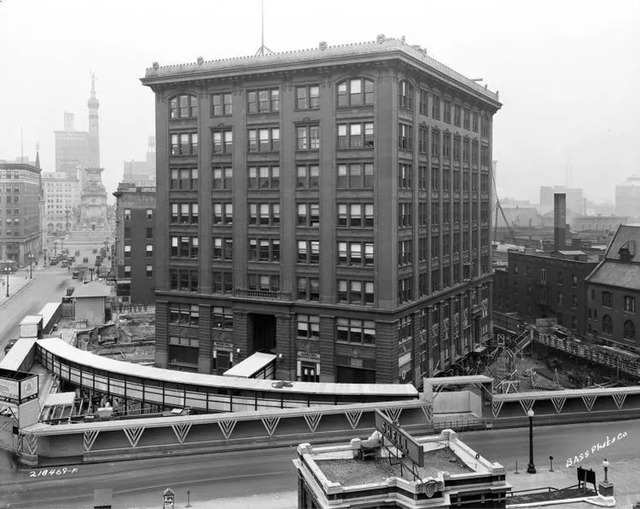
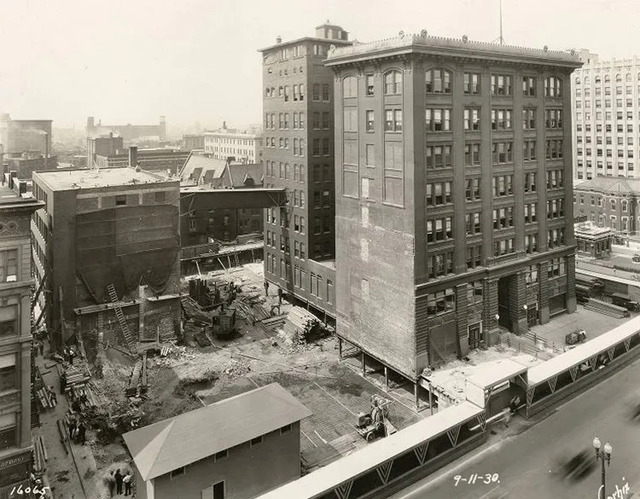
However, demolishing the existing building would disrupt the company’s operations, an option that was deemed unacceptable. Instead, the decision was made to move the entire building 90 degrees to make room for the new structure. This bold choice posed a daunting question: Could such a monumental task be achieved without halting business operations? The answer lay in groundbreaking engineering.
Video
Watch the Telephone Collectors International (TCI) video as they move the Indiana Bell Central Office – explore the fascinating process and history behind this significant piece of telecommunication history!
The Ingenious Engineering Behind the Rotation
The rotation of the Indiana Bell Building remains one of the most intricate engineering projects of its time. The process began with hydraulic jacks carefully lifting the building off its foundation. Once elevated, workers placed hydraulic rollers underneath the structure, allowing it to glide along a concrete surface. The movement was methodical, occurring at a pace of just 40 centimeters per hour.
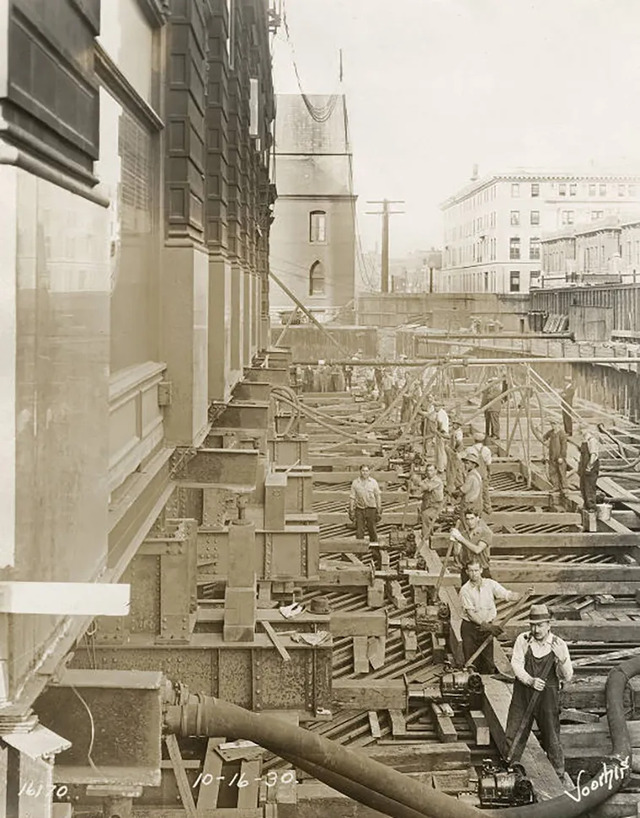
To support the immense weight of the building, 75-ton spruce beams were strategically positioned beneath the rollers. These beams distributed the load evenly, preventing structural damage. As one roller completed its job, the next was seamlessly installed, ensuring the building moved smoothly without interruption.
What made this feat even more extraordinary was the precision required. The entire rotation needed to align perfectly with the new orientation, and the building had to remain structurally sound throughout the process. Engineers achieved this through meticulous calculations and innovative techniques, cementing this project as a masterpiece of early 20th-century engineering.
Keeping Operations Uninterrupted
While the technical aspects of the rotation were impressive, the logistical challenges of keeping the building operational during the move were equally astounding. Indiana Bell needed to ensure that employees could continue their daily work without disruption, and this meant maintaining access to the building and its utilities.
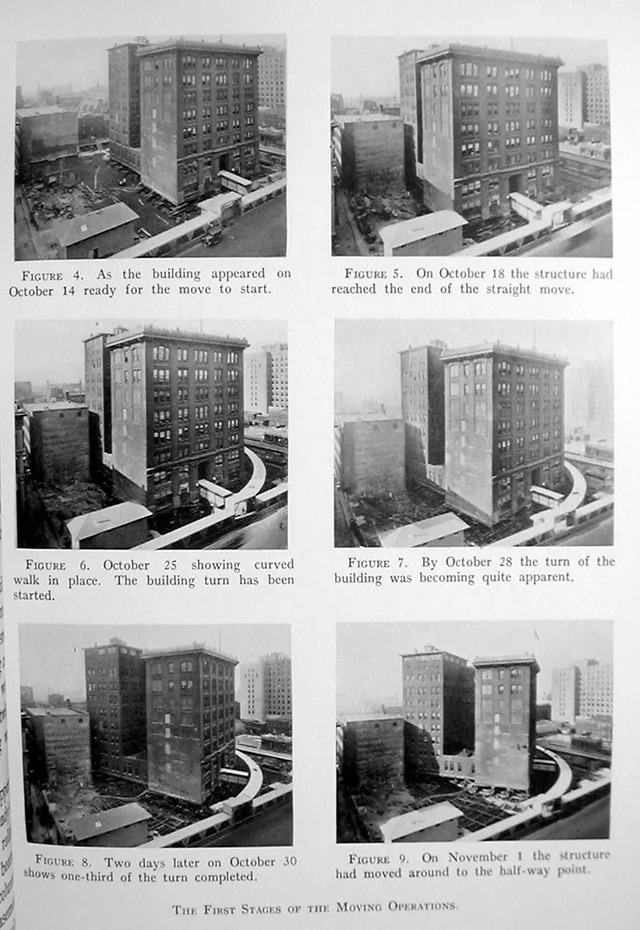
To address accessibility, engineers designed a mobile walkway that connected the entrance to the street. As the building shifted position, this temporary walkway was adjusted to provide continuous access for employees and visitors.
Utilities posed another significant challenge. Services such as electricity, water, gas, and even telephone lines had to remain functional during the move. Ingeniously, flexible connections were implemented to ensure uninterrupted supply. Workers coordinated closely to avoid any disruptions, allowing the building to remain fully operational throughout the process. Employees reportedly continued their work without even noticing the gradual movement of their workplace—a testament to the precision and ingenuity of the operation.
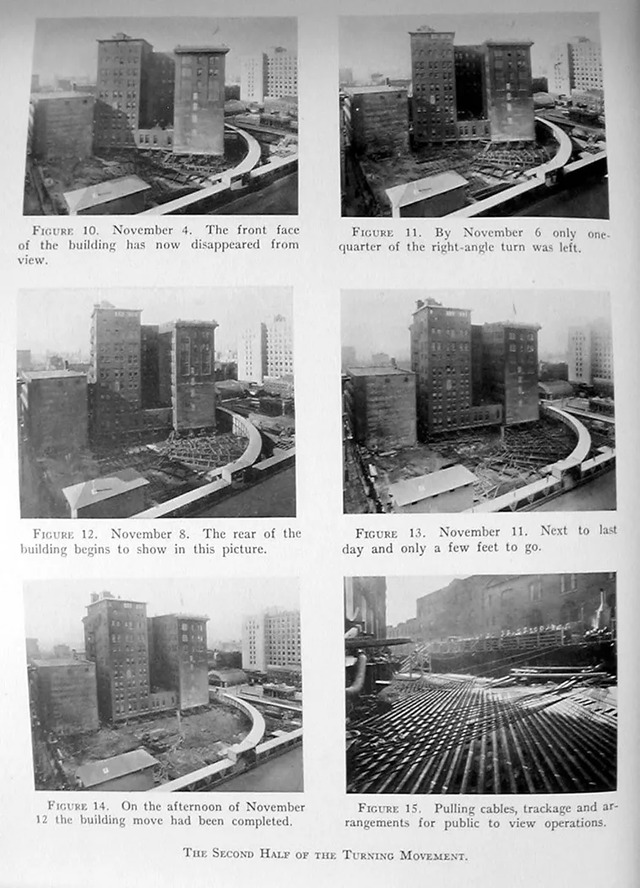
The Outcome of the Rotation
The rotation of the Indiana Bell Building was successfully completed over the course of a month. When the dust settled, the building stood in its new orientation, seamlessly integrated into its surroundings. This achievement allowed Indiana Bell to proceed with the construction of their new headquarters, meeting the growing demands of their business.
For over two decades, the relocated building continued to serve as a functional office space. It stood as a symbol of progress and innovation, proving that seemingly impossible challenges could be overcome with creativity and determination.
The End of an Era: Demolition and Legacy
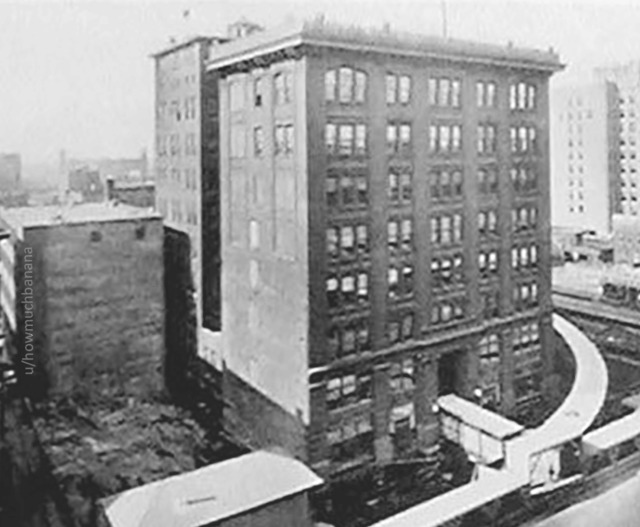
Despite its remarkable history, the Indiana Bell Building’s time came to an end in 1963. To accommodate an ever-expanding workforce, the structure was demolished to make way for a new 22-story office complex, now home to AT&T. While the original building no longer stands, its legacy lives on.
The new complex incorporates elements of the original building’s Art Deco style, preserving a connection to its storied past. This nod to history ensures that the memory of the Indiana Bell Building—and its awe-inspiring rotation—remains alive for future generations.
Conclusion
The story of the Indiana Bell Building is more than just an engineering success—it’s a tale of vision, resilience, and the refusal to accept limitations. Moving a seven-story building while keeping it fully operational might seem impossible even today, yet it was achieved nearly a century ago with the technology available at the time.
This project reminds us that innovation often arises from necessity, and with enough creativity and determination, even the most daunting obstacles can be overcome. As we walk past modern office buildings, it’s worth pausing to reflect on the ingenuity of those who came before us—and how their achievements continue to inspire the world. The Indiana Bell Building may no longer exist, but its legacy as a triumph of human ingenuity will never fade.
